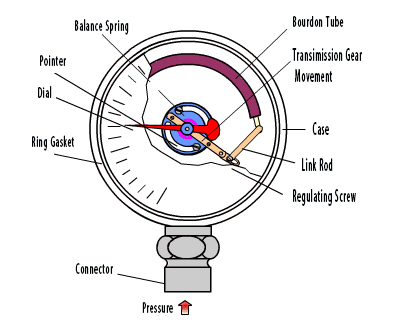Y series general stainless steel pressure gauge
Cat:Pressure Gauge
◆ Model: Y40 Y50 Y60 Y75 Y100 Y150 Y200 Y250◆ Use: This series of instruments is suitable for measur...
See Details
The following are the general steps for accurately calibrating a pressure gauge to ensure its accuracy:
Preparatory Work
·Selecting standard instruments: Based on the range and accuracy requirements of the pressure gauge to be calibrated, select a standard pressure gauge or pressure calibrator with a precision level at least one grade higher than that of the gauge to be calibrated.
·Check the instruments: Ensure that the standard instrument and the pressure gauge under test are free from any damage to their appearance, that the connecting parts are in good condition, and that the pointer can rotate freely.
·Preparation of environment: Calibration should be conducted in a room where the environmental conditions such as temperature and humidity meet the requirements. The general temperature should be within 20℃ ± 5℃, and the humidity should be between 40% and 60%.
Calibration Steps
1. Installation connection: Connect the pressure gauge to be calibrated and the standard instrument through the pressure conduit or connector properly, ensuring a tight and leak-free connection.
2. Preheating: Power on the pressure gauge and the standard instrument and let them warm up for a period of time, usually 15 to 30 minutes, to ensure the instruments reach a stable working condition.
3. Zero point calibration: When no pressure is applied, check if the pointer of the pressure gauge being calibrated is at the zero position. If there is any deviation, use the dedicated tool to adjust the zero position adjustment screw to ensure that the pointer accurately points to the zero mark.
4. Range Calibration: Gradually apply pressure to the pressure gauge to be calibrated and the standard instrument using the pressure source. Calibrate at several points corresponding to 20%, 40%, 60%, 80%, and 100% of the pressure gauge's range. At each calibration point, once the pressure stabilizes, record the pressure value of the standard instrument and the indication value of the pressure gauge being calibrated.
5. Error Calculation and Adjustment: Calculate the error for each calibration point. If the error exceeds the allowable range, the calibrated pressure gauge needs to be adjusted. For bourdon tube pressure gauges, fine-tuning can be achieved by adjusting the rotation ratio of the mechanism; for digital pressure gauges, the corresponding parameter settings can be adjusted according to the instructions.
6. Return error calibration: After completing the range calibration, gradually reduce the pressure and repeat steps 4 and 5. Check the return error, which is the difference in the indication value during the rising and falling processes at the same calibration point. This should comply with the accuracy requirements of the pressure gauge.
7. Calibration Record: Record all the data obtained during the calibration process, including calibration points, standard values, measured values of the calibrated object, and errors, etc. This will facilitate future queries and traceability.

Calibrated Processing
· Marking and Certificates: Pressure gauges that have passed calibration should be labeled with a calibration certificate, indicating the calibration date, validity period, etc. At the same time, a calibration certificate should be issued to prove that the pressure gauge has been calibrated under specified conditions and meets the corresponding accuracy requirements.
·Non-conforming treatment: For pressure gauges that fail the calibration, they should be clearly marked and isolated to prevent their improper use in production or testing processes. Depending on the specific situation, they can be repaired or replaced, etc.
It should be noted that the calibration of pressure gauges should be carried out in accordance with the relevant standards and regulations of each country. The calibration personnel must possess the necessary qualifications and skills. Moreover, pressure gauges should be calibrated regularly to ensure that they always maintain good accuracy and reliability.